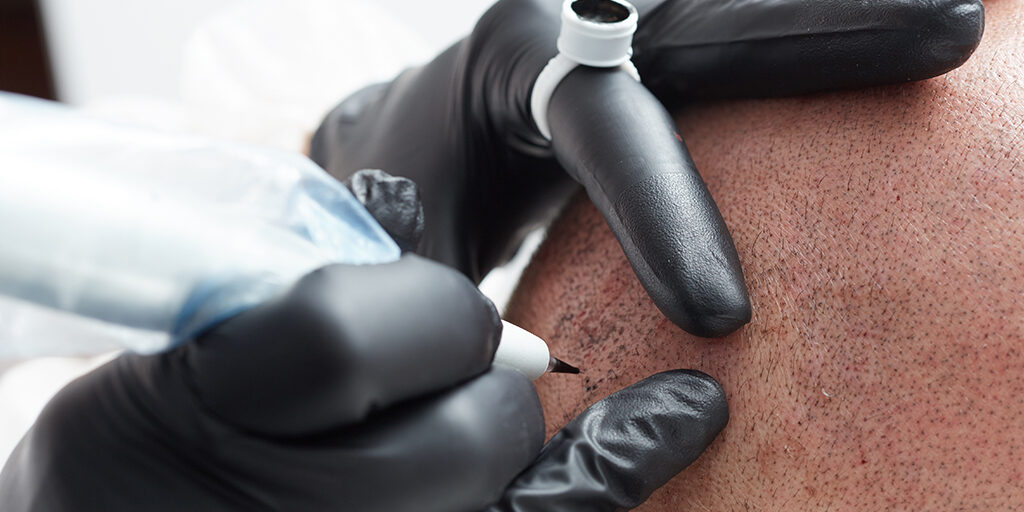What is scalp micropigmentation?
Scalp micropigmentation (SMP), sometimes referred to as scalp tattooing, is a form of permanent makeup which is used to treat hair loss and thinning hair on clients of all genders. The popularity of SMP treatments has skyrocketed in recent years as many clients are opting for this non-surgical procedure over more invasive, high-risk, and expensive treatments.
In this blog we are going to talk you through what SMP involves, why it is such a popular hair-loss treatment and how you can train in SMP and begin offering these life-changing services. So, let’s get into it!
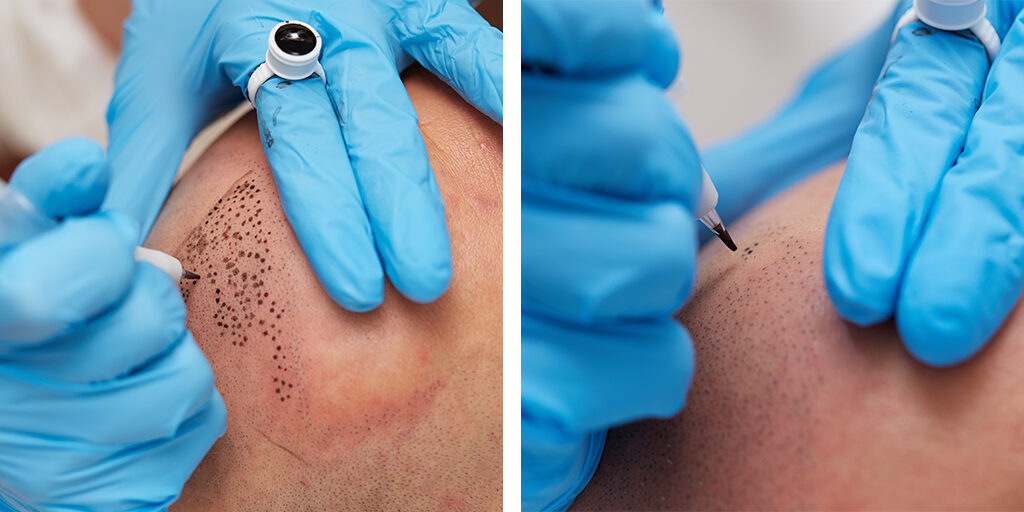
What does SMP involve?
The scalp micropigmentation procedure involves an artist using a PMU (digital) machine and needle cartridges to deposit small dots of pigment into the skin on the scalp to accurately replicate the appearance of shaved, natural hair follicles.
Each scalp micropigmentation treatment will take several hours and most clients will be required to undergo multiple treatments to achieve the desired results. How many treatments they require will depend on the extent of their hair loss or thinning, their skin-type and the desired results.
SMP clients will be required to wait a number of weeks between each treatment, and it is extremely important that they follow the aftercare guidance of the artist to prevent infection and ensure healthy healing with maximum retention. We have a whole blog post dedicated to aftercare and healing here. Failure to follow aftercare instructions can result in higher risk of infection, poor retention, and other issues which can compromise the healed results.
Who is eligible for SMP?
Although SMP clients are mostly male, the treatment can be hugely beneficial to clients of all genders. It is effective in treating hair loss for both male and female pattern baldness. It can also be used to treat clients with alopecia or those who have scarring on the scalp from injury, previous hair transplants or other surgeries.
It can also be used to treat clients who have undergone chemotherapy or radiotherapy which has resulted in hair loss. However, permission should always be given by a doctor first before undergoing the procedure in this instance. Clients may not be eligible for the treatment due to compromised immune system and other associated risks of chemo and radiotherapies.
The treatment is also suitable for those who suffer from trichotillomania: a compulsive disorder in which sufferers pull out hair, eyebrows or eyelashes. It is also effective for anyone with naturally thinner or fine hair who are unhappy with how it looks and want to create the illusion of thicker, fuller hair.
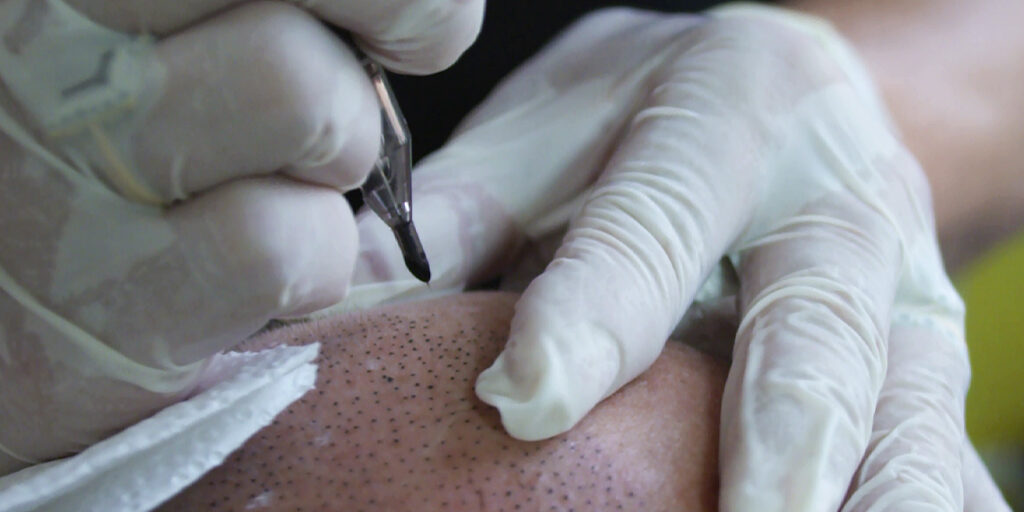
Why is SMP so popular?
Scalp micropigmentation is a hugely popular treatment for hair loss for many reasons. One of them being that it is a much more cost-effective treatment compared to surgical options, which can cost up to tens of thousands of pounds. Prices will vary depending on the technician but overall, the lower price point of SMP compared to other hair-loss options makes it much more affordable for clients to access the treatment.
A lot of clients will choose SMP due to the non-invasive, non-surgical nature of the procedure. Pain and discomfort during an SMP treatment is minimal, depending on the individual’s pain threshold and there is hardly any downtime following treatment. This is hugely appealing to clients when compared to a risky hair transplant surgery which can have a lengthy and painful recovery period.
Compared to surgical solutions, the results of SMP are much more instant and guaranteed. Multiple sessions may be required to add density, but the client will be able to see a difference immediately. Unfortunately, some hair-transplant surgeries can fail, and the client will not achieve the results they had hoped for. Many experienced SMP artists will treat clients following a failed hair transplant or a transplant that has left visible scarring at some point in their careers.
As well as all of the benefits above, SMP is extremely low maintenance once healed. It is sweat-proof, waterproof and the client doesn’t need to give their healed scalp tattoo another thought apart from regular touch ups every 12-18 months and using SPF. This is a breath of fresh air for clients who may have previously used wigs or hair piece ‘systems’ to treat their hair loss, which require constant maintenance.
Is SMP painful?
Like other permanent makeup treatments, the level of pain experienced during the SMP procedure does come down to the individual’s pain threshold. Most clients report it to be mildly uncomfortable or virtually pain free.
Some factors can lead to the treatment being more uncomfortable such as consuming alcohol in the days before the treatment or the area being exposed to harmful UV rays so clients will need to bear this in mind. Alcohol consumption and sun exposure can also increase risk of bleeding, infection and scarring so is to be avoided prior to treatment to ensure a safe and comfortable procedure.
For clients who menstruate, they may experience increased discomfort if they undergo SMP around the time of their period – which is another factor to consider in whether the treatment will be painful or not.
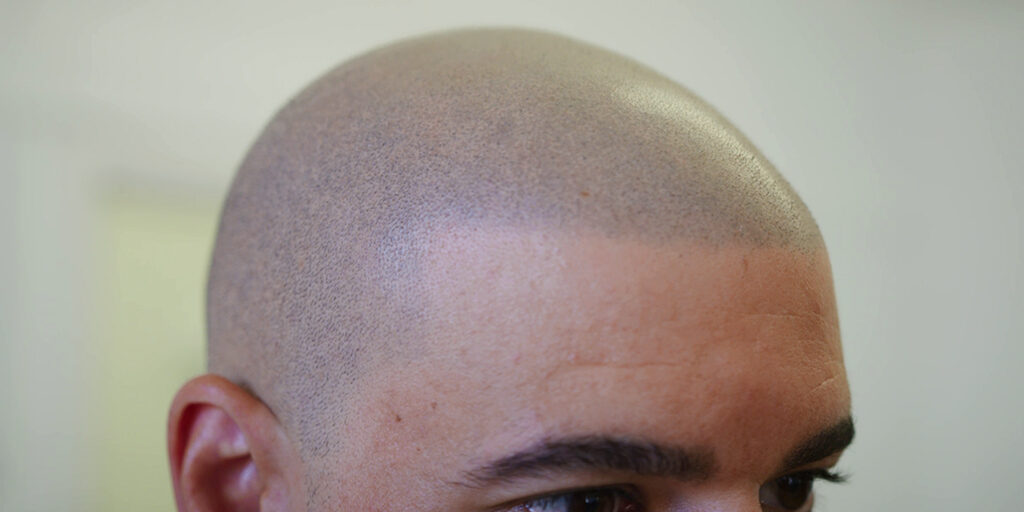
How do I train to become an SMP artist?
More and more people are training in scalp micropigmentation as there is so much demand for this hair-loss solution and it is also one of the most rewarding treatments on the market. SMP artists are able to give clients the gift of confidence and it is a really worthwhile skill to have.
We cover how to become a PMU artist in our blog here and the general idea applies for those training in SMP. Most courses won’t require you to have any prior experience meaning that complete beginners are able to sign up and learn this treatment.
Experienced technicians who offer treatments such as brows or lips can also embark on a training course to offer SMP alongside their existing treatments and reach a wider client base.
What are the best products for SMP treatments?
At Killer Beauty, we understand the importance of using products specifically tailored to your treatment so that is why we created the Killer Beauty SMP cartridges. These cartridges have been designed specifically with scalp treatments in mind and aim to create super-realistic, natural results.
The Killer Beauty SMP cartridges contain precision soldered, razor-sharp needles and the needles within the cartridges are actually thinner than others on the market for maximum precision and accuracy when implanting pigment.
The cartridges are enclosed in a single capsule made from a super-strong polycarbonate material which protects the needle from wear and tear, which is key during lengthy SMP treatments to ensure the needle remains sharp. Encasing is transparent for a clear view of pigment flow and placement during SMP.
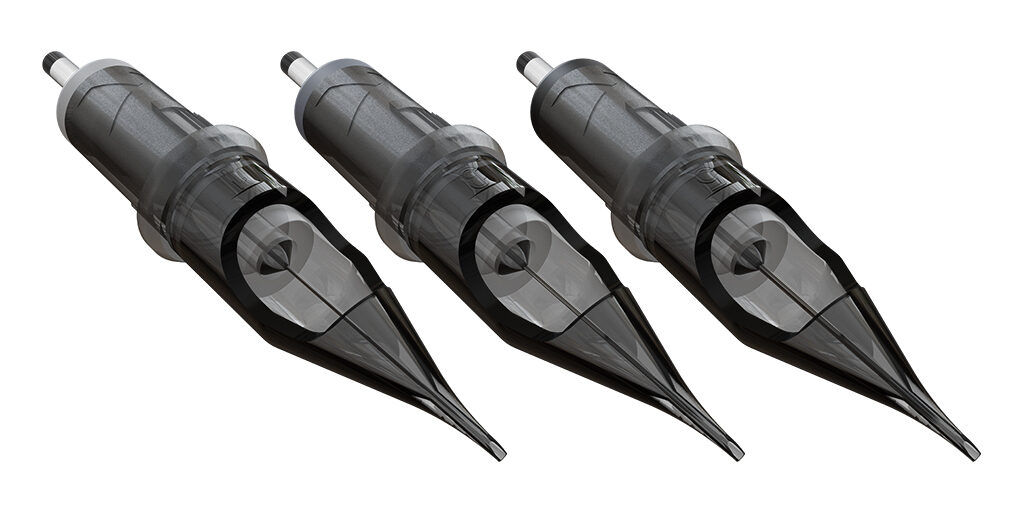
For pigments, both Perma Blend and Li Pigments offer their own range of specially formulated pigments to realistically replicate hair colour, with a range of shades. Both pigment lines help artists create super-natural results that age gradually over time, with no unwanted shades. However, modification may be required for some skin tones – check out our colour theory blog here.
There you have it! Everything you need to know about scalp micropigmentation and the reasons why it is one of the biggest hair loss treatments available today. There are so many benefits to having this treatment and a huge range of clients who are eligible – if you’re considering training in SMP we say go for it!
